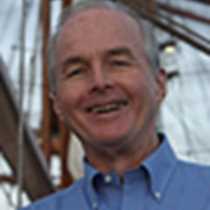Amsterdam
I could hear the rain pouring before daybreak as I lay in my cabin. As we pulled into the harbor of Denhelder the gods must have been looking after us as the rain ceased and a gray cloud hung low in the sky. The temperature on leaving the ship was 52f and with little wind we had a promising day before us.
We boarded our buses in the port of Denhelden at 8AM for our ninety minute ride through the Dutch countryside to Amsterdam. Denhelden is in the north of the Netherlands and is in the province of north Holland. The official name of the country is Netherlands and can be best translated as the “low Countries,” indicating that much of the country – 35% in fact – lies below sea level. The highest “mountain” in the Netherlands is 900 feet above sea level and the lowest point is at Rotterdam at 21 feet below sea level. You can imagine that maintaining the dykes is a serious part of the government’s responsibility as the North Sea is always threatening to overwhelm them.
The name “Holland” is taken from the two provinces that achieved wealth during the golden age of the Netherlands in the 17th century. As we drove along the canals that dot the Dutch landscape, I was struck with how fertile and green everything was. Holland has a cool wet climate and rarely has freezing weather. Although arable land was all around us, only 4% of the population is involved in farming and farms are small averaging approximately 100 acres.
We arrived in the great city of Amsterdam -- a city of almost 800 thousand -- the largest city in a country of 16 million and boarded our boats for canal tour of the city. The architecture of the homes along the canals is breathtaking. Perhaps the most elegant of the canals and its adjoining streets in the “Gentlemen’s Canal.” There the homes date principally from the mid to late 17th century. The facades of the homes range from the whimsically baroque to the severe neo-Classical style.
We disembarked in front of the Rijks Museum for our guided tour of this great museum. The highlights of the museum are its collection of Dutch Renaissance masters, notably Rembrandt and Vermeer. We ate lunch at a restaurant with the inimitable name of the “Fly Flies.” Lunch was a delicious three course affair in a 17th century house. Our tables were nestled in between large dark oaken beams.
After lunch most of us went on to the van Gogh (pronounced van Houk) Museum. Their collection is the greatest in the world and his genius is reflected best in his last few years in Arles, France.
We arrived back on the National Geographic Explorer at about 5:30pm and had our first recap of the trip. To say today was a full day would be an understatement of egregious hyperbole. We went to bed sleepy but exhilarated.




